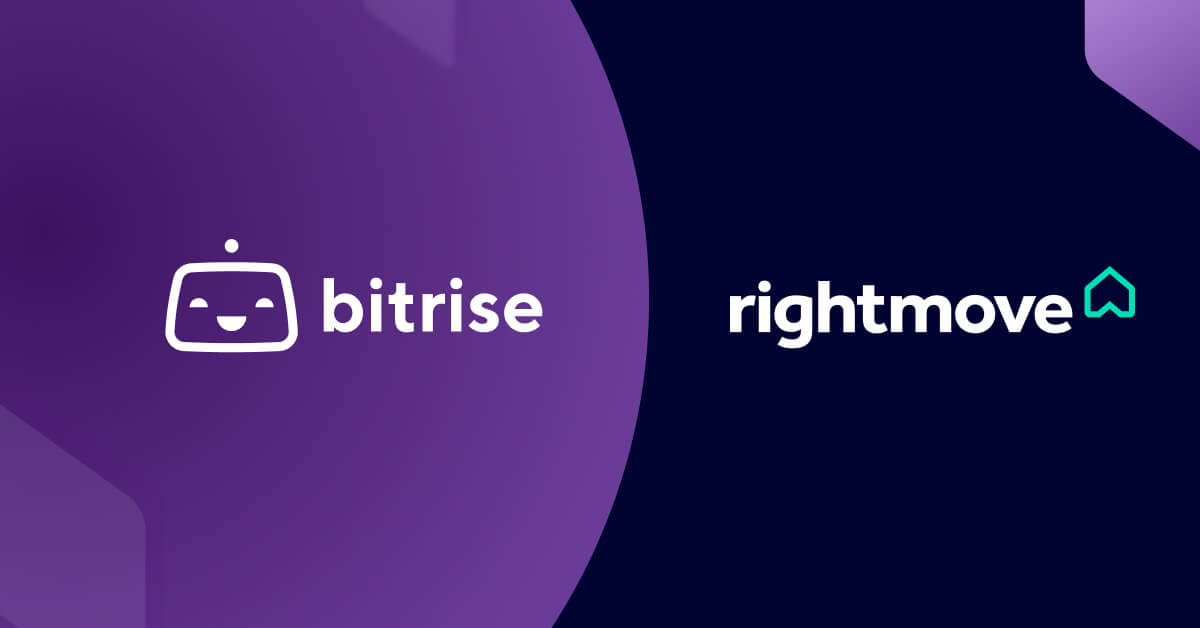The Worldwide Developers Conference (WWDC), Apple's annual developer event, is creeping towards us — kicking off on June 5 and ending on June 9, 2023, at Apple Park. This conference provides a unique opportunity for developers to gain insight into Apple's latest technological advancements and connect with engineers. Much like the majority of the world, we at Bitrise will be joining online, eager to see what's on the horizon.
Here's a roundup of what we know and what's being speculated about the upcoming WWDC 2023
Confirmed announcements
Apple is set to reveal the latest advancements with a new xrOS operating system and software development kit, new MacBooks, iOS 17, iPadOS 17, macOS 14, and significant watchOS 10 updates. The most anticipated announcement is for their mixed-reality headset, the first major new Apple product category in nearly a decade.
Expected software announcements
In this year's WWDC 2023, we anticipate the unveiling of new versions of Apple's operating systems, including iOS 17, iPadOS 17, macOS 14, tvOS 17, and watchOS 10. These updates are predicted to deliver both quality-of-life improvements and exciting new features. With the sweeping update to 17, we are expecting some updates and new features to developer services like Xcode and Xcode Cloud.
iOS 17 highlights
Bloomberg's Mark Gurman suggests that iOS 17 will incorporate some of the "most requested features" from users, hinting at a more substantial update than initially forecasted. MacRumors sources also reveal a lineup of potential new features, including Control Center updates, active widgets, an enhanced Dynamic Island, and more.
While iOS 17 was initially targeted as a minor update to focus on bug fixes and performance enhancements, Apple has now included several "nice to have features". However, unlike the previous version, it won't have a central "tentpole feature". The primary reason for this change in direction is Apple's decision to devote significant resources to developing the xrOS, the operating system for its AR/VR headset.
Despite the shift in focus, iOS 17 promises to deliver essential bug fixes, performance boosts, and many intriguing features. Here are some of the most anticipated features and changes coming to iOS 17:
- A major revamp of the built-in Control Center is expected, marking the first significant update to this feature since iOS 11 was launched in 2017. The specifics of these changes are yet to be disclosed but are hinted to revolve around enhanced UI and customization options.
- Apple is also working on a new journaling app designed to enable users to track and record their daily activities and thoughts. The app will analyze user behavior to understand a typical day, including time spent at home and any out-of-the-ordinary events. It will suggest potential topics for users to write about and even detect nearby friends.
- The Dynamic Island feature is due for an upgrade, aiming to make it more functional. One of the potential enhancements could be integrating the Siri interface into Dynamic Island, making the Siri pop-up less intrusive on the iPhone.
- Apple is reportedly testing active widgets for the iPhone's Home Screen and Today View. If implemented, these active widgets could include one-tap buttons, sliders, and more, transforming widgets into dynamic and interactive user interface elements.
- Significant enhancements are expected for the system-wide search and Spotlight functions, promising a more seamless and efficient user experience. Another major anticipated update is the expansion of the Health app to the iPad, which will also include a mood-tracking function and new features for users with vision issues.
- Minor tweaks to the Lock Screen are in the pipeline, including options to adjust the font size. Users might also be able to share their custom Lock Screen designs with other iPhone users. In addition, Apple Music is expected to receive a simplified interface, with the possibility of viewing lyrics directly on the Lock Screen.
- An exciting update is planned for the flashlight functionality, where the flashlight brightness will be adjustable with a slider similar to the volume button.
Furthermore, Apple plans to accommodate European legislation that requires the allowance of sideloading starting in iOS 17. This could lead to considerable changes in the App Store policies, affecting developers and users.
Expected hardware announcements
After numerous delays, the headset, rumored to be called “Reality Pro”, is reportedly set for an official reveal at WWDC, alongside new software platforms and developer tools.
The AR/VR headset is rumored to include features such as both augmented and virtual reality capabilities, an external battery pack worn at the waist, 4K micro-OLED displays, and a gesture-based control method with no physical controller. It's expected to include powerful Apple silicon chips — the same as the chips used in the Mac — and an xrOS operating system with a dedicated App Store, a unique FaceTime experience, and the option to run iPhone and iPad apps.
In addition to the headset, Apple is reportedly developing an updated version of the MacBook Air with an M3 chip inside and an all-new 15-inch MacBook Air. Both of these products are potential candidates for a WWDC announcement.
More on M3
The introduction of the Apple M3 chip could signify a substantial leap in power and performance for future Apple computers, potentially outperforming its predecessors, the M1 and M2 chips. The M3 chip is rumored to use TSMC’s 3nm process, which would make the next MacBook Air and iPad Pro far more powerful than their predecessors, which use TSMC’s 5-nanometer technology. A version of the M3 Pro chip with 12 CPU cores, 18 GPU cores, and 36GB of memory has reportedly been tested, indicating a significant boost in computational power over the M2 Pro, which features a 10-core CPU, a 16-core GPU, and 16GB of RAM.
Furthermore, the introduction of the M3 could also influence Apple's production and development strategies. For example, with the M1 Ultra chip, Apple adopted a new architecture where two M1 Max chips are fused into one single monolithic System-on-a-Chip (SoC) using an interposer. This approach, termed UltraFusion by Apple, allows the software to leverage all the CPU cores and GPU cores as if it was a single chip rather than two. This architecture might be a part of future chips like the M3, providing a solution for when semiconductor foundries hit a wall with process technology. This approach could help Apple hedge against potential slowdowns in process node advancements and rising costs of leading-edge processes
Rumors and speculations
A few exciting rumors are circulating ahead of WWDC 2023. One of them is Generative AI, which has seen exponential growth across various industries. It would be interesting to see how Apple plans to integrate this technology into its ecosystem. A potential update or new feature involving Generative AI in iOS 17 or their developer tools could open up an array of possibilities for app development and user experience.
What this means for developers
Given the announcements expected at WWDC 2023, developers will have much to look forward to. The new software updates across iOS, iPadOS, macOS, watchOS, and tvOS will bring new capabilities and improvements that can enhance the performance and features of applications. Developers will also have access to new APIs and tools like Xcode, to leverage these enhancements in their applications.
The introduction of the Reality Pro headset signifies a significant step into the AR/VR space by Apple. Developers will have an opportunity to design applications and experiences for a brand-new platform. The dedicated App Store and the ability to run iPhone and iPad apps suggest a rich ecosystem for developers to tap into.
Additionally, the new MacBook Air models, including a larger 15-inch variant, offer enhanced performance and capabilities, which could provide developers with powerful new tools for creating and testing their applications.
Implications for Bitrise users
As a Continuous Integration and Delivery (CI/CD) platform focusing on mobile development, Bitrise is closely following these developments. Introducing new software platforms, devices, and developer tools will require developers to test their applications in new environments and possibly adapt their code to new APIs.
With Bitrise, you can automate your testing process and ensure your applications are compatible with the latest Apple platforms and devices as soon as they're released. This will help you deliver updates faster and provide a seamless experience for your users, regardless of whether they're using the latest iOS version or Apple's new AR/VR headset.
We are excited about the possibilities that WWDC 2023 will bring, and we look forward to supporting our developers in leveraging these new advancements in their applications. Stay tuned for more updates from Bitrise on how we can help you make the most of the latest technologies and tools announced at WWDC 2023.
Looking ahead
As we count down the days to WWDC 2023, we recommend developers stay tuned for further details from Apple. The Apple Developer app and the Apple Developer website will be the primary sources of information leading up to and during the event.
As always, we can expect surprises at WWDC. The excitement includes last-minute rumors and leaks, surprise announcements, and unexpected reveals. Whatever Apple announces, we'll be ready to help Bitrise developers take full advantage of the new technologies and opportunities that arise.
We'll be watching WWDC 2023 closely and will provide updates on what the announcements mean for Bitrise users. We can't wait to see what Apple has in store this year!




